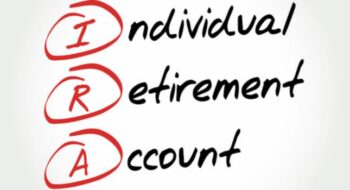Turning 59½ might not be a milestone you throw a big party for—but in the world of retirement planning, it’s a big deal. Why? Because this is the age when the IRS finally gives you penalty-free access to the retirement savings you’ve been building for decades.
But just because you can tap into your funds doesn’t mean you should—at least not without a strategy. Understanding what happens when you turn 59½—and what opportunities it unlocks—can make a big difference in how prepared and confident you feel about your retirement future.
🔑 Key Takeaways
- At 59½, you can withdraw retirement funds without the 10% penalty.
- This milestone opens the door to tax strategies like Roth conversions and in-service rollovers.
- Different account types have different rules—know what applies to yours.
- Acting during this window can help reduce taxes, boost income, and prevent mistakes.
- A financial pro can help you make the most of this window before RMDs begin.
Why 59½ Matters More Than You Think

The 59½ retirement rule is more than just being able to access your retirement account penalty free.
While most people know this rule ends the 10% penalty on IRA and 401(k) withdrawals, few realize it also unlocks powerful planning strategies—like Roth conversions, in-service rollovers, and early income structuring.
So, how does the 59½ rule work in practice? In short: it opens the door to greater flexibility. You’re no longer penalized for taking withdrawals, giving you a unique window to manage taxes, shift assets, and start building your income strategy—on your terms.
This window of opportunity won’t last forever. Once Required Minimum Distributions (RMDs) kick in at age 73, your flexibility shrinks. That’s why 59½ is the ideal time to start optimizing your retirement plan.
What Changes at 59½
When thinking about retirement, at 59½, the rules—and your options—start to change in meaningful ways.
This is the age where the rules around your retirement savings start to loosen up, giving you more freedom and flexibility.
Here’s what happens when you turn 59½ retirement-wise:
✅ Penalty-Free Withdrawals Begin
You can now withdraw from IRAs, 401(k)s, and other qualified retirement accounts without the 10% early withdrawal penalty. While income taxes still apply to traditional accounts, this opens up flexibility for funding early retirement or managing income gaps.
🔄 In-Service Rollovers May Be Allowed
If you’re still working, some employer plans allow you to roll over funds from your 401(k) into an IRA without quitting your job. This gives you more control, broader investment options, and better alignment with your retirement goals.
🔁 Roth Conversion Opportunities Expand
59½ is a prime time to consider Roth IRA conversions. Strategic conversions—especially in lower-income years—can help reduce your future tax burden and create a pool of tax-free income for your golden years.
🔓 Income Strategy Becomes Real
Whether you’re gearing up to retire or just testing the waters, 59½ marks the moment you can start shaping your income strategy the way you want.
Tuesdays 7:00 pm ET
Webinar: New Rules of Retirement Income Planning
Retirement has changed. Are you prepared? Learn how to build lasting and reliable income.
Reserve My Spot
What You Can Do at 59½ (And Should Seriously Consider)
Now that the door is open, what you do with that new flexibility matters even more.
The 59½ retirement rule isn’t just about accessing your money penalty free—it’s about making smart, strategic decisions that can set the tone for the rest of your retirement.
Here are a few high-impact moves to consider:
- Create a Tax-Smart Withdrawal Plan – Just because you can take money out doesn’t mean you should do it all at once. Think about how withdrawals now might affect your tax bracket, Medicare premiums, and long-term income sustainability.
- Start Strategic Roth Conversions – Use this window—before RMDs begin at age 73—to convert funds from a traditional IRA to a Roth IRA. This can reduce future tax burdens and help you grow tax-free income.
- Consolidate or Reposition Retirement Accounts – With in-service rollovers or IRA transfers, now is a great time to consolidate accounts, reduce fees, and align your investments with your retirement timeline.
- Consider Guaranteed Income Options – If you’re worried about running out of money or market swings, this is the time to look at tools like annuities that can turn part of your savings into predictable monthly income.
- Plan for Healthcare – If you retire before age 65, make sure you factor in healthcare costs and how withdrawals may affect your eligibility for ACA subsidies.
- Work With a Financial Pro to Build Your Retirement Game Plan – The years between 59½ and 73 are a golden window for tax planning, income mapping, and legacy building. A professional can help you spot opportunities—like implementing a guardrail strategy to balance income needs and market risk—and avoid costly missteps.
Don’t Miss Your 59½ Window
You’ve unlocked new options—but knowing which moves are right for you takes a solid strategy.
Key Considerations: Account-Specific Rules and Nuances
Not all retirement accounts follow the exact same playbook. Knowing the unique rules for each type of account can help you avoid mistakes and take full advantage of the 59½ retirement rule.
401(k) and 403(b) Plans
- Penalty-free withdrawals allowed after age 59½
- Still working? You may qualify for in-service rollovers to an IRA
- Retired at 55 or older? You might qualify for the Rule of 55
- Withdrawals are taxed as ordinary income
Traditional IRAs
- Withdrawals after 59½ are penalty-free
- Still taxed as ordinary income
- Ideal for Roth conversions during low-income years
- No employer restrictions—you already have full control
Roth IRAs
- Contributions can be withdrawn tax- and penalty-free anytime
- To withdraw earnings tax-free at 59½, the account must be open at least 5 years
- If the 5-year rule isn’t met, earnings may still be taxed—even after 59½
SEP-IRAs and SIMPLE IRAs
- Follow the same rules as traditional IRAs after age 59½
- SIMPLE IRA exception: If you withdraw within 2 years of opening, the penalty is 25%—even after 59½
- After that 2-year mark, standard rules apply
If you’re comparing your options, it’s worth exploring the distinctions between a SEP IRA vs. Traditional IRA to see which best aligns with your retirement strategy.
Common Mistakes to Avoid at 59½
Even with new flexibility, it’s easy to go off course. Here are common pitfalls to watch for:
- Withdrawing too much, too soon
- Neglecting long-term growth opportunities
- Failing to coordinate withdrawals with Social Security or Medicare planning
- Ignoring Roth conversion windows that could save thousands in future taxes
- Underestimating healthcare costs as you age
- Not consulting with a professional before taking action
Retirement planning after 59½ requires ongoing attention as your situation evolves. Review your withdrawal strategy annually, considering changes in tax laws, investment performance, health status, and personal goals.
Want to make the most of your options at 59½?
Schedule a free consultation and learn how to build a tax-efficient, income-secure retirement plan tailored to your goals.

Frequently Asked Questions
Do I have to start withdrawing money at 59½?
No. 59½ is simply the age when the 10% early withdrawal penalty goes away. You’re not required to take money out until Required Minimum Distributions (RMDs) begin at age 73 (for most people). This age just gives you more flexibility and planning opportunities.
Will I still pay taxes on withdrawals after 59½?
Yes, if you’re withdrawing from traditional accounts like a 401(k) or Traditional IRA, those funds are still taxed as ordinary income. However, withdrawals from a Roth IRA may be tax-free if the account has been open for at least five years.
What should I do first when I turn 59½?
Start by reviewing your current accounts, income needs, and long-term goals. From there, consider talking to a financial professional who can help you create a withdrawal plan, explore Roth conversions, and optimize your tax strategy.
Is $1 million enough to retire at 59½?
That depends on your lifestyle, expected longevity, healthcare costs, and income strategy. For a deeper dive, check out our guide on whether $1 million is enough to retire—and how to make it work for your unique goals.
Are there exceptions to the 59½ retirement rule?
Yes. While 59½ is the standard age to avoid the 10% early withdrawal penalty, there are several exceptions that may allow penalty-free withdrawals before that age. These include:
- Disability
- Substantially equal periodic payments (SEPP rule)
- Qualified education expenses
- First-time home purchase (up to $10,000 from an IRA)
- Unreimbursed medical expenses over 7.5% of AGI
- Health insurance premiums while unemployed
- The Rule of 55 (for workplace plans if you separate from your employer at 55 or older)
These exceptions often still require you to pay income tax, but waive the early withdrawal penalty. Always consult a tax advisor before proceeding.




